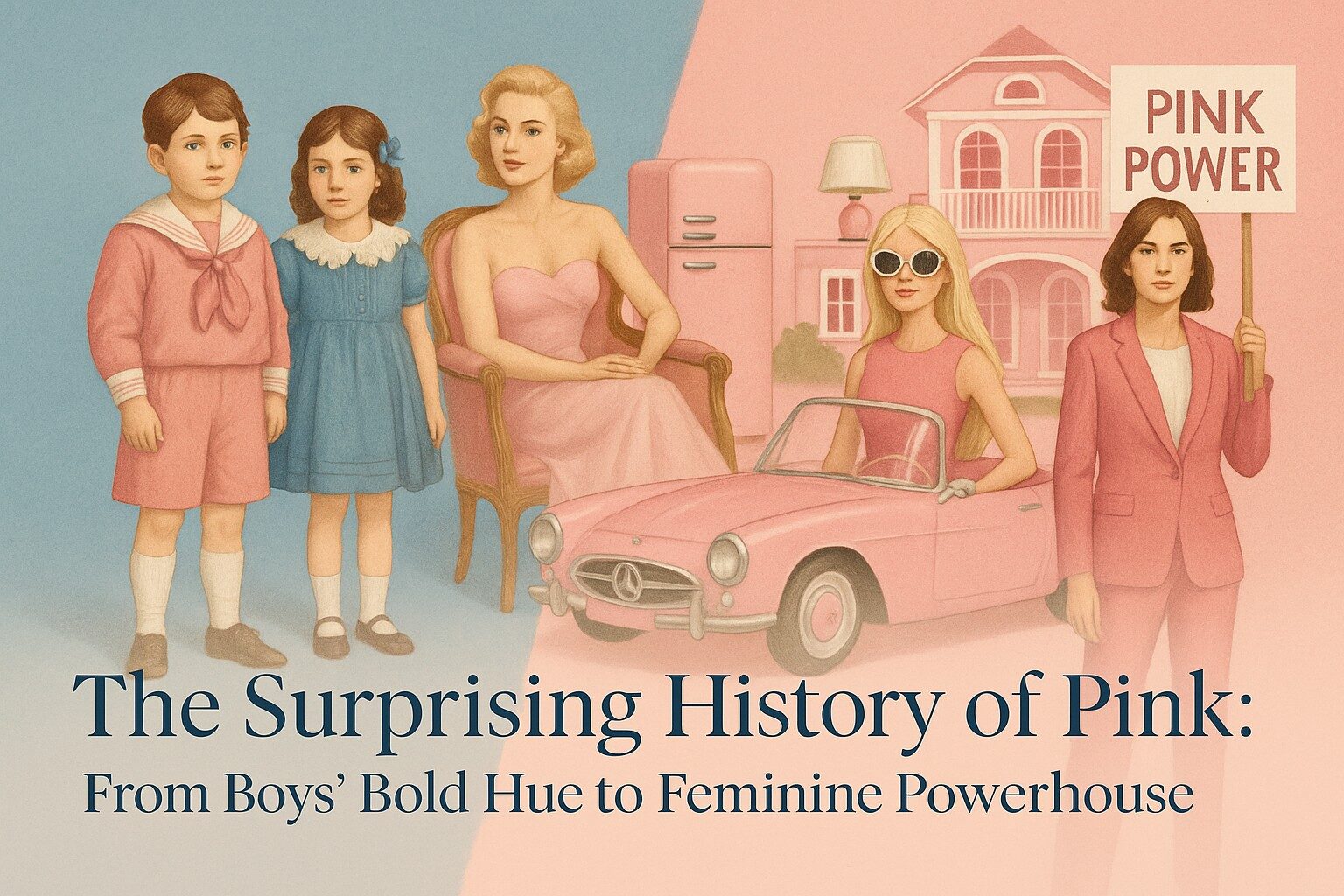Picture this: you hear “baby girl,” and your mind instantly conjures up pink frilly dresses, Barbie dreamhouses, cotton-candy vibes. But here’s the jaw-dropping twist: pink used to be the go-to color for boys. Yes, you read that right! So how did pink go from rugged masculinity to the ultimate “girl color”? Buckle up for a wild, colorful ride through the history of pink a story that’s equal parts surprising, inspiring, and a little rebellious. Let’s dive in!
The Early Days: Pink Was a Boys’ Club
Rewind to the early 1900s. Pink wasn’t swaddling baby girls it was the color of choice for little boys in sailor suits. A 1918 article from Ladies’ Home Journal declared pink “more decided and stronger,” perfect for boys, while blue was “delicate and dainty,” better suited for girls. Crazy, right? Back then, pink’s boldness its fiery, reddish undertones made it a symbol of masculinity, while blue’s calm, serene vibes were seen as feminine.
Imagine tiny boys strutting around in pink knickers, while girls rocked blue frocks like it was no big deal. This wasn’t just a quirky trend; it was the norm. So, what flipped the script? Spoiler: it’s a mix of fashion, marketing genius, and some major cultural shifts.
The Fashion Flip: Pink Goes Glam
Fast forward to the 1940s and 50s. World War II shook up society, and gender norms got a serious makeover. As women stepped into new roles, fashion followed suit. Pink started sneaking into women’s wardrobes think Hollywood starlets gliding across the screen in soft, pastel dresses. It was chic, glamorous, and suddenly… feminine.
By the 1950s, marketers smelled opportunity. Pink wasn’t just a color; it was a lifestyle. From dresses to kitchen appliances (hello, pink fridges!), pink became the poster child for the post-war “perfect housewife” aesthetic. Advertisers leaned in hard, selling pink as aspirational, modern, and effortlessly feminine. The shift was subtle at first, but it laid the groundwork for pink’s big takeover.
The Baby Boom and the Gendered Pink Explosion
Here’s where things get juicy. The post-war baby boom meant a flood of new parents buying baby clothes, and retailers saw dollar signs. Why sell neutral onesies when you could push specific colors for boys and girls? Enter the great color-coding era: pink for girls, blue for boys. By the 1980s, this was cemented, thanks to ultrasound technology letting parents know their baby’s gender before birth. Suddenly, pink onesies were flying off the shelves.
And then came Barbie. Oh, Barbie. Her pink-tastic world dreamhouses, convertibles, and glittery heels turned pink into a cultural juggernaut. It wasn’t just a color anymore; it was a vibe, a brand, a whole identity. From toys to lunchboxes to bedroom decor, pink ruled the ‘80s and beyond, screaming “girl power” (or at least, “girl aesthetic”).
Pink’s Global Glow
Pink’s story isn’t just a Western one it’s a global phenomenon. In Japan, pink evokes cherry blossoms, symbolizing beauty and impermanence. In India, vibrant pinks light up saris and wedding celebrations, radiating joy and femininity. Across cultures, pink is versatile: soft yet fierce, delicate yet daring. It’s a color that says, “I’m here, and I’m owning it,” resonating with women worldwide in their own unique ways.
Reclaiming Pink: A Power Color for All
Here’s the best part: pink’s history proves colors don’t have to be gendered. It was for boys, then for girls, and now? It’s for everyone. Today, women are reclaiming pink as a power color. From sharp pink power suits in boardrooms to bold pink protest signs on the streets, pink is a statement a celebration of strength, resilience, and community.
Think about it: pink is the color of breast cancer awareness, feminist movements, and stereotype-smashing style. It’s not just a “girl color”; it’s a symbol of breaking the rules and rewriting them. Whether you’re rocking a pink blazer or just vibing with a pink scrunchie, you’re part of a story that’s still unfolding.
So, What’s Your Pink Story?
Pink’s journey from boys’ bold hue to feminine powerhouses hows us that colors are what we make them. It’s not just a shade on a palette; it’s a story of culture, power, and reinvention. So, whether you love pink, hate it, or wear it ironically, know this: you get to define what it means. So, what’s your pink story? Drop it below, and let’s keep this colorful conversation going. Until next time, stay bold, stay vibrant, and maybe… throw on a little pink. History looks better in full color.
About the Author
Karen Rodrigues is an entrepreneur and the founder of LaCarene Luxury Trading (P) Limited, a boutique destination for elegant fashion and lifestyle products. With a passion for style and storytelling, Karen blends her business acumen with creative vision to curate collections that resonate with modern women.
👉 Connect with Karen on LinkedIn

